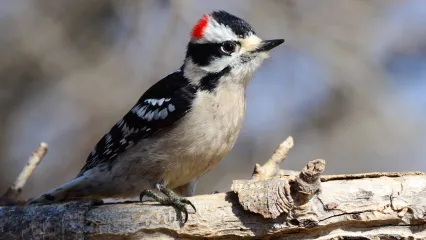
Description
These small sparrows have a two-tone body coloration. The upper two-thirds of the body is gray to black in color, while the belly is a contrasting white. The tail is gray to black, but the outer tail feathers are white. These white feathers are visible when in flight. The bill is small and yellowish to light pink in color. There is considerable variation in the plumage color, and some individual juncos show an orange-pink color on their sides, some show a brownish back coloration, and some have a black or dark gray head that is darker than the rest of the body. The coloration of these birds is very distinctive and should not be confused with any other species common to bird feeders in Oklahoma. This is the only species with a combination of a dark upper body and white belly, yellow to pink bill and white outer tail feathers.
Size
Approximately 5.5 to 6.3 inches in length. Wingspan of 7.1 to 9.8 inches.
Habitat
This is one of the most common birds in Oklahoma during the winter. It can be found in all types of habitat with some tree or shrub cover including thickets, woodlands, savannahs, forest edges and fencerows. It commonly visits urban and residential neighborhoods, especially where mature trees are present. Juncos are found statewide from early October to early April.
Life Cycle
At feeders, dark-eyed juncos primarily eat millet, but will also eat milo, thistle and finely cracked corn. Away from feeders, they eat a variety of small seeds.
How To Observe
These birds are usually seen in flocks that may be as small as three or as large as 40 birds. Juncos feed on or near the ground and will feed on seeds scattered on the ground or from low platform-type feeders.


